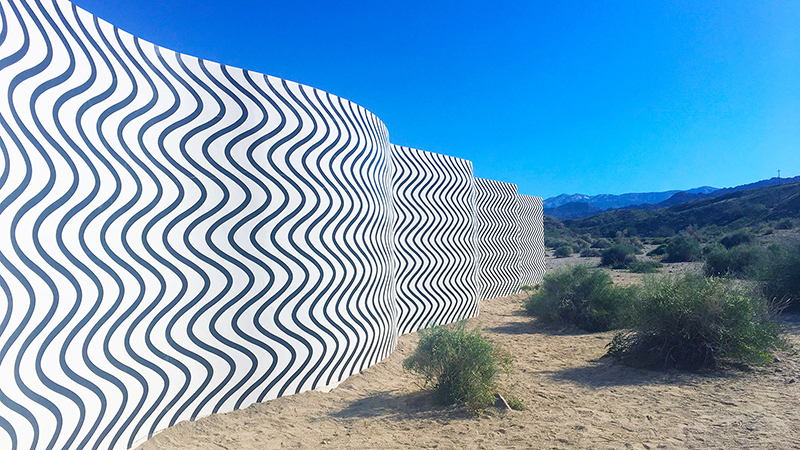Exploring Desert X

Every two years the Desert X art exhibition returns to the Coachella Valley, bringing massive site-specific art installations to various desert environments. But Desert X is way more than an art exhibition. It’s a self-guided outdoor experience where you have the rare opportunity to interact with immersive world-class art outside the confines of galleries. All you need is a car, a site map, and a sense of adventure. Intrigued?
The first Desert X exhibition opened in 2017 to international acclaim, showcasing 16 artists who created provocative outdoor and indoor installations for locations from Whitewater Preserve to Coachella. Since that time the locations have expanded south with installations around, in, and on the disappearing Salton Sea. Past Desert X works have amplified global and local issues ranging from climate change to Tribal culture, immigration, and tourism. At each biennial exhibition, curators ask visitors to “be brave, engage their sense of adventure, and open their hearts as they seek the various art installations, paying attention not only to their physicality but also to the stories they tell: emotionally, historically, or socially.”
Generally March through May, art installations at Desert X will tell stories about the coming climate crisis, where and how humanity has built in the past, and how we’ll continue to build in the future. Exhibitions will combine sculpture, musical performance, painting, poetry, and other mediums. All of the outdoor installations are free to visit and usually open to the general public from sunrise to sunset. Some are right off major roads, while others are in sandy expanses of desert or unexpected locales. Maps and programs will be available on the Desert X website starting March 4, or download the free Desert X app. Make a day of it and visit all the locations, or just pick a few … it’s your adventure!
Desert X encourages visitors to follow official Leave No Trace guidelines: Plan ahead and prepare, walk on designated paths, dispose of waste properly, leave what you find, respect wildlife, don’t smoke, and be considerate of other visitors. There are no public restrooms. Once the biennial closes, some installations usually remain accessible or might be moved to new locations in town. Historically, the Desert X Map page is updated with current information about any projects that remain on view. So even when the next biennial is over, you can still experience world-class immersive art in the desert.
